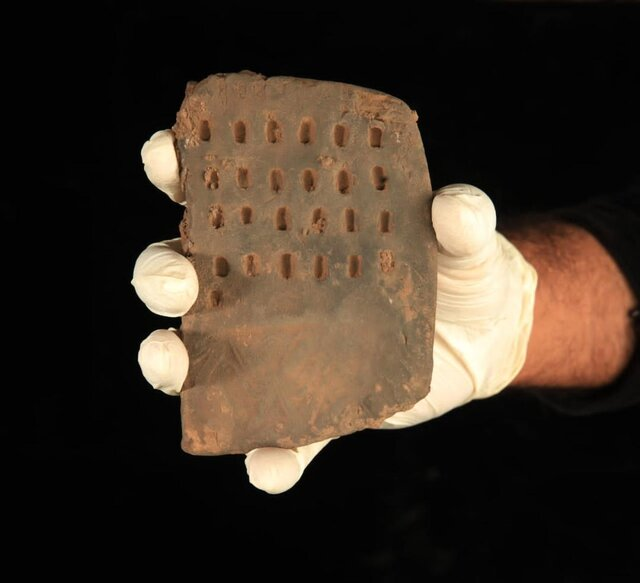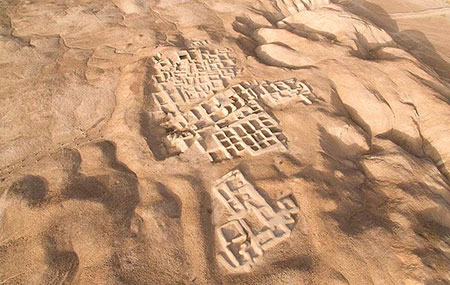After 50 years of excavating the burnt city or Shahr Sookhteh, archaeologists have for the first time discovered an accounting tablet from the beginning of Elamite times.
According to ISNA, quoting the public relations of the Cultural Heritage and Tourism Research Institute, Seyed Mansour Seyed Sajjadi, head of the Archaeological Board of Shahr Sookhteh explained about this important discovery: Archaeologists have never made such a “unique” discovery.
He said that this tablet shows the connection between the community of Sokhteh and the people of the beginning of Elam, adding: Hossein Moradi, archaeologist and deputy director of the Archaeological Board, reached this tablet at a depth of four meters in room 27 of the residential area of Sokhteh.
Seyed Sajjadi called the discovery somewhat awaited and said: “At the Archaeological Conference in the Southeast, I promised the archeological community that such an event would take place in the very near future and that the Archaeological Board would make this discovery.”

The head of the archeological board of Shahr Sookhteh said about the specifications of this accounting tablet: this tablet is 11 cm long and 7 cm wide and includes two types of symbols. One of the symbols is the lines that indicate the type of goods shipped with the tablet, and the other is a series of deep rectangular shapes that indicate the number of goods shipped that are currently unfamiliar to us.
The archaeologist considered the most important point in the structure of this tablet to be the sign of the sender’s cylindrical seal on it and added: “According to the structure of this seal, it is quite clear that people used the decimal accounting system at that time, unlike the Sumerians whose accounting system was based on the sixty system.”.
He pointed out that until the nineteenth chapter, much older parts of Shahr Sookhteh had not been excavated. “In the last two seasons, we decided to work in deeper layers, which fortunately led to the discovery of this valuable tablet at a depth of four meters,” he said.
Sajjadi stated: “Currently, in the last days of the exploration and research of the nineteenth chapter in Sokhteh city base, we are recording, recording and preparing documents and work reports, and the drilling work in the three main boreholes in the residential area has been completed.”
Archaeologists have begun excavations for the nineteenth chapter of Shahr Sookhteh since November 22, 2021, and are now nearing its end. Explorations this season were limited to three workshops due to lack of funding; The first workshop is located in the eastern residential area, where archeological activities were carried out with the aim of obtaining older layers. Workshop No. 33, which is the second workshop, continued the activities of the past three seasons. Workshop No. 39 is also located in a residential area where the activities of the Archaeological Board were carried out with the aim of finding new buildings and architecture.
Archaeologists from Italy and Serbia have also been invited to explore this season, according to Shahr Sookhteh World Heritage Site.

The burnt city (Shahr Sookhteh) was registered as a cultural site in UNESCO in 2014 with five thousand years of history and civilization, there is one of the most important ancient urban areas on the Iranian plateau, which is located about 60 km from Zabol, Sistan-and-Baluchestan.
Significant artifacts from Shahr Sookhteh have already been discovered, including a 13-year-old girl undergoing surgery on a skull, a 28- to 32-year-old woman’s artificial eye made of a combination of natural bitumen and animal fat, and fine golden wires resembling capillaries of an eye. a 10 cm long ruler made of ebony wood that measures up to accuracy one millimeter, backgammon made of ebony wood with 60 beads, and an earthenware cup designed by a moving goat, which is called the oldest animation in the world. Some of these works can be seen in the Museum of Shahr Sookhteh in Sistan and Baluchestan Province.